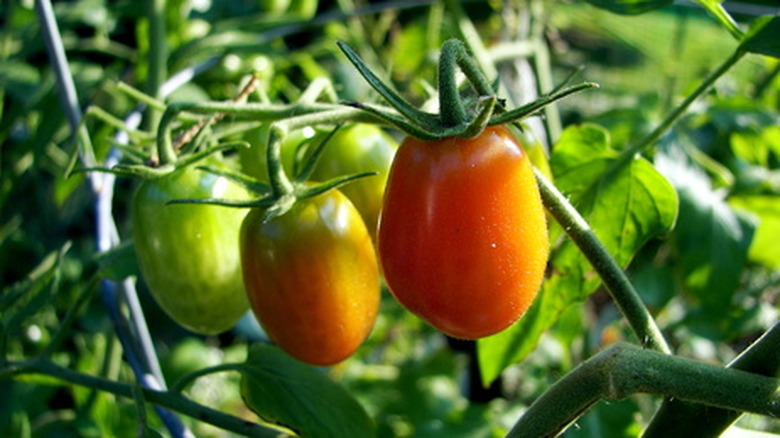How Can I Tell If I Am Over Watering Or Under Watering My Tomato Plants?
Things Needed
- Hand tiller/hoe
- Organic soil amendments (manure/compost)
Whether to call a tomato a vegetable or a fruit may be a point of contention among gardeners, but it makes no difference in the care of the plant. These tender perennials are grown as annuals and adorn backyards and front steps across the U.S., earning them the honor of the best-loved garden vegetable—or fruit, if you prefer. With proper care, tomato plants produce an abundant crop of juicy, ripe tomatoes bursting with flavor.
Step 1
Check the soil around the base of tomato plants by inserting your finger in the soil to a depth of 2 to 3 inches. If soil is dry, the tomatoes are under-watered. If soil is soggy, your tomatoes have been over-watered. Soil should feel moist to the touch.
- Whether to call a tomato a vegetable or a fruit may be a point of contention among gardeners, but it makes no difference in the care of the plant.
- If soil is dry, the tomatoes are under-watered.
Step 2
Watch for signs of wilting. Tomato plants wilt quickly when water is withheld. Ironically, plants that are over-watered may also show signs of wilting, as the water in the soil chokes out oxygen, causing stress to the plant. If you are unsure, check the moisture level of the soil to confirm over- or under-watering.
Step 3
Dig into the soil to examine the roots of your tomato plants. Healthy roots are light tan or white. Plants that are over-watered often develop disease, causing roots to turn dark or mushy.
- Watch for signs of wilting.
- Plants that are over-watered often develop disease, causing roots to turn dark or mushy.
Step 4
Water tomato plants thoroughly once a week. Saturate the soil to the root level. Water container-grown tomatoes until water runs clear of the drainage holes in the bottom of the container. Soil in containers dries quickly in warm weather and may require daily watering.
Tip
Mulch tomato plants with 2 to 3 inches of grass clippings to hold in moisture. Add organic matter to containers or beds before planting tomatoes to improve the texture of the soil and promote good drainage.
Warning
Add drainage holes to containers before planting tomatoes.
